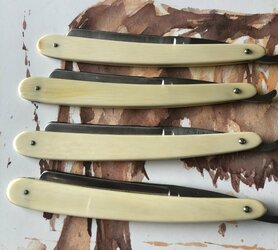- Thread starter
- #21

Spent today cleaning up the corrosion on the blades and pinned them.
Just took my time and did it right. I did use collars on the pins, so I had enough confidence to pin them tighter than what they were. They are fine now, not as tight as I prefer, but at least they don’t flap around.
I am very happy with the result.
Tomorrow I will hone them and put them through a balsa progression. No doubt in my mind they will be great shavers.
Thanks for the advice and support guys!



